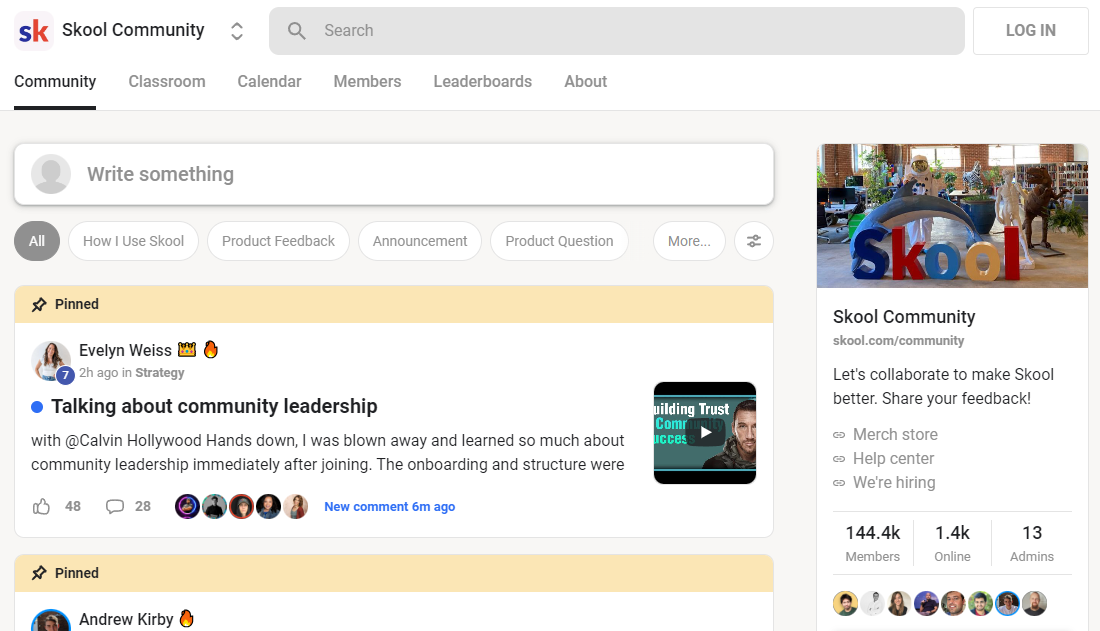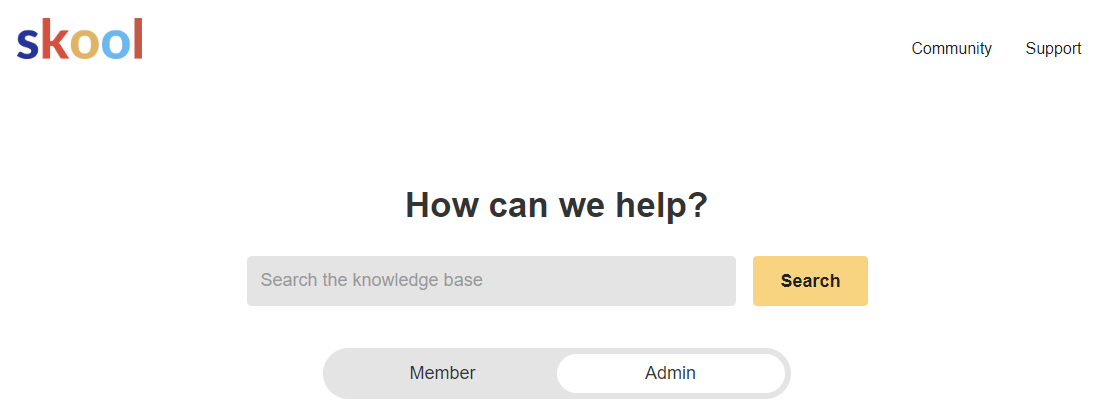Skool offers best-in-class gamification functions that improve involvement. For instance, members can make degrees based upon their participation, which open course content and various other rewards that additionally inspire them.
Previously, designers had to make use of various devices for holding training courses, developing neighborhoods and handling email marketing. This created a disjointed experience for both designers and their audiences.
Developing Courses
Skool has a basic, easy to use interface and focuses on community structure and course organizing over various other features. It permits developers to develop a lively community for their training courses and mentoring programs by linking them with the best target market. This likewise helps them monitor the wellness of their material business with the help of an easy dashboard.

To begin, a person can sign up for a complimentary 14-day test of Skool. Afterwards, they can pay $99 a month for the system to host a single neighborhood. There are nothing else prices choices readily available for the moment. Skool additionally refines settlement and pays developers weekly, but it does charge a 2.9% purchase fee.
Among the special elements of Skool is that it can be made use of to produce interactive programs. These can include online webinars, group jobs and real-time discussions. These types of programs urge participation and rise course conclusion prices. Additionally, Skool’s gamification features help to motivate neighborhood involvement. As an example, members can gain points and unlock program material when they reach details levels in the neighborhood.
Individuals can additionally utilize the social prey on Skool to upload updates and communicate with others in the neighborhood. The feed looks like a Facebook group, but with a much more regulated means of uploading. This helps to avoid the type of spam and misuse that happens on other social platforms.
Managing Communities
Skool is an extremely easy system to use, for both members and admins. Its simpleness is among its main marketing points– when somebody joins your neighborhood they won’t be confronted with a bunch of options or attributes that can hinder their experience and confuse them.
The system starts as a private group by default, however you can conveniently alter this to open up your area to anybody that you intend to become part of it. As soon as you’ve done this you’ll see a social feed like you would on Facebook Groups or WhatsApp (however without all the scam stuff and swearing).
You can additionally include a class tab to your community that you can make use of to share instructional material with your participants. This function is specifically valuable for neighborhoods that are focused on understanding or professional advancement as it aids to develop an instructional framework and makes it easy for participants to track their development. On top of that, the platform has gamification elements that permit members to earn points by suching as articles or remarks. When they get to a particular level they can open resources, such as programs, additionally driving involvement.
The other great thing is that Skool has a mobile application, much like Mighty Networks or Slack, so members can stay on par with your area and engage on the move. This is an excellent way to motivate and engage your participants and to help them get support from each various other when they need it, as opposed to simply turning to you for answers.
What Percent Does Skool Take
Skool focuses on gamification, enabling individuals to make factors and badges for their contributions. This motivates participants to engage with the community and contribute to discussions. Consequently, this helps them level up and unlock advantages like video clips and various other material. Admins can likewise set training courses to be opened at particular degrees to further drive engagement.

The Skool interface is spick-and-span and intuitive. Its main features consist of the Community tab, which looks just like a Facebook team feed. Below, users can post comments and text in addition to upload pictures, links and video clips. Members can additionally see each others profiles and connect with them. Moreover, users can develop private groups in the community to discuss certain subjects.
One more function of Skool is the Classroom tab, which resembles a YouTube livestream or Zoom meeting. Using this, administrators can host trainings and webinars for their students. They can additionally add occasions in the schedule to remain updated on upcoming occasions and What Percent Does Skool Take.
Nevertheless, some aspects of Skool might utilize renovation. For instance, the platform isn’t versatile when it comes to money making as individuals can not supply multiple prices tiers for their programs and area subscriptions. Moreover, the tool does not have an e-mail marketing function, which could be a deal breaker for some program developers. It likewise does not have indigenous video hosting, meaning that customers require to utilize outside platforms like YouTube, Loom and Vimeo for their videos.
Adding Content
The process for adding material and communicating with members on Skool is simple and straightforward. Admins can create blog posts with message, GIFs, videos and surveys. They can additionally add occasion calendars to notify area members of upcoming group Zoom calls or live streams. In addition, they can make use of Skool’s email broadcast function to send out a message to the whole area with a solitary click. This removes the need for tagging and list segmentation, which can be troublesome.
Furthermore, Skool’s gamification functions can enhance engagement and individual retention. It urges participants to interact with the web content often by compensating them with different perks. These include opening course material, gaining points and earning a place on area leaderboards.
While Skool supplies a host of helpful functions for creating and delivering on-line programs, it’s not for everybody. The system is best for instructors, professionals and other details entrepreneurs. Nonetheless, the price can be a challenge for some individuals wanting to monetize their on-line material.
Furthermore, the absence of standard tiers and a brief free trial might be a deterrent for several. In addition, the system’s laser-focus on eLearning can make it much less preferable for people who wish to sell other digital items. However, despite these downsides, What Percent Does Skool Take is still a viable alternative for any individual looking to produce and generate income from online courses.